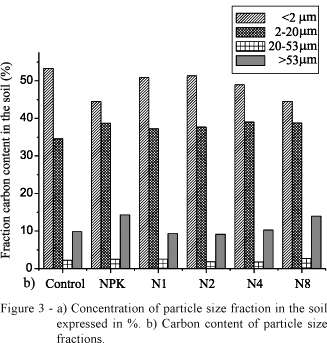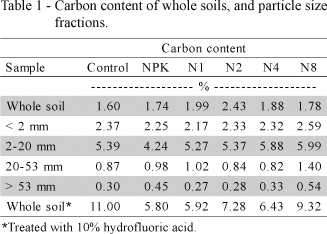Sludge applications have been used to maintain fertility of agricultural soils without damaging the natural ecosystem. The aim of this study was evaluating the influence of sewage-sludge addition on the quality of organic matter (OM) of a Brazilian Oxisol by Laser Induced Fluorescence (LIF). LIF was used to analyze OM of whole soil and different soil fractions separated by chemical and physical methods. The high fluorescence contribution of humin fraction to the fluorescence of whole soils was shown, stressing the importance of studying OM associated to mineral matrix of soil. Spectra with different shapes were obtained for every particle size fraction, indicating differences in organic compounds bounded to them. The fraction with the higher carbon content was the 2-20 µm, that contains ~5% C and represents only 10% in soil, but stores 34-39 % of total C and shows the highest fluorescence intensity. The spectrum of this fraction shows its heterogeneity and a higher concentration of compounds which fluorescence is centered at 510 nm. This indicates a higher concentration of unsaturated bond systems capable of high degree of resonance, increased conjugation of the electron pi system, and higher aromaticity comparing with other fractions. No differences were detected for treatments of sewage-sludge applications. LIF spectroscopy is a promising technique for OM studies in whole soils, allowing to study spatial distribution of OM within the soil's mineral matrix, including Oxisols.
tropical soil; spectroscopy; particle size fraction; chemical fractions








